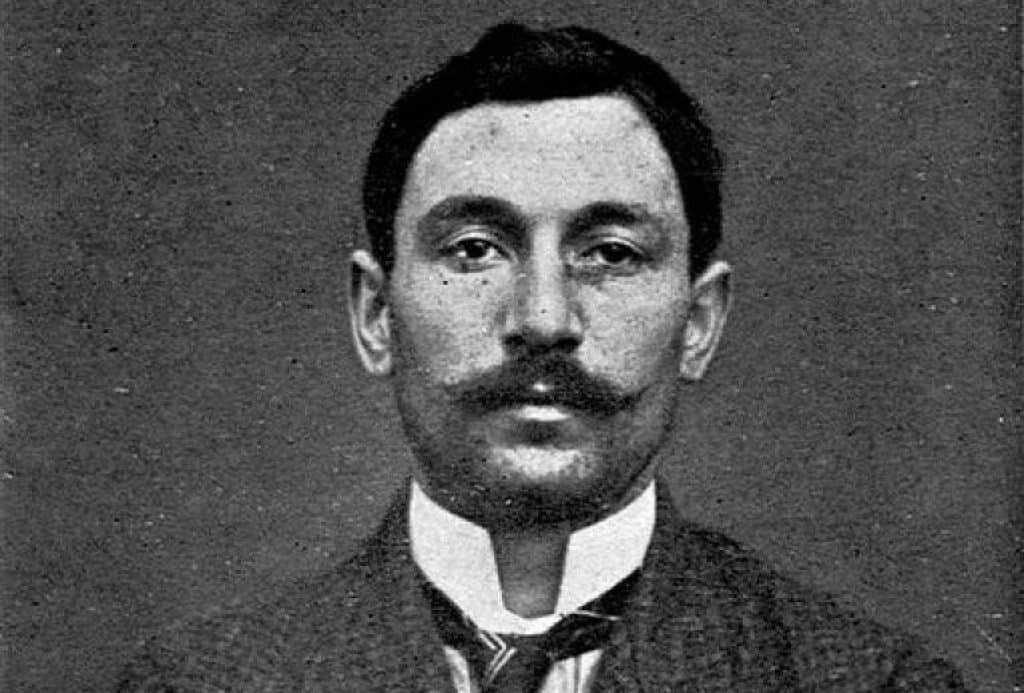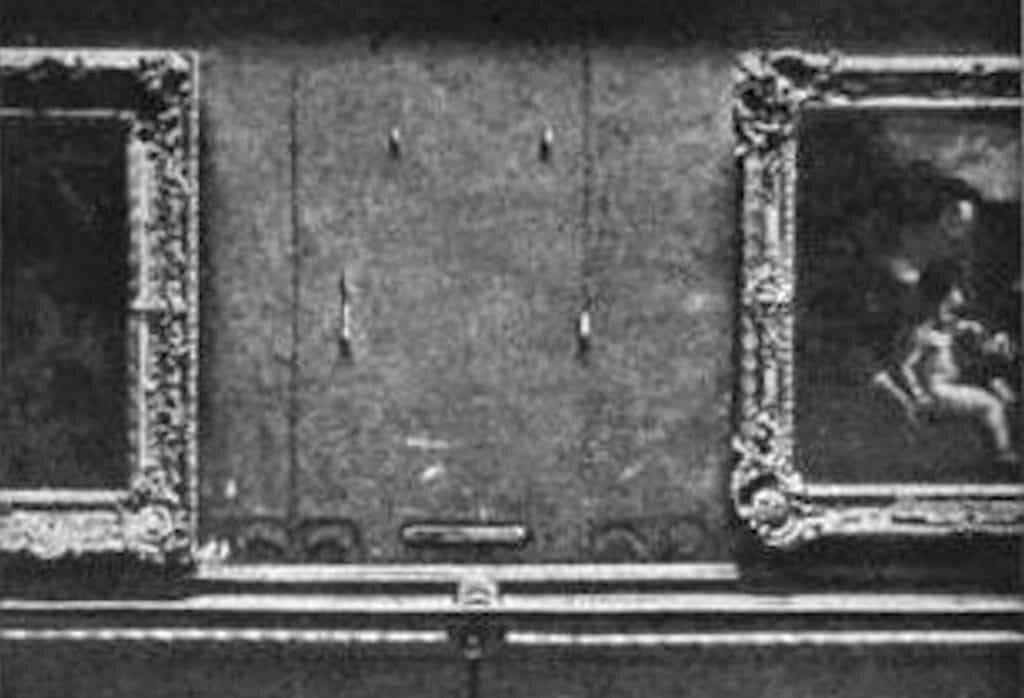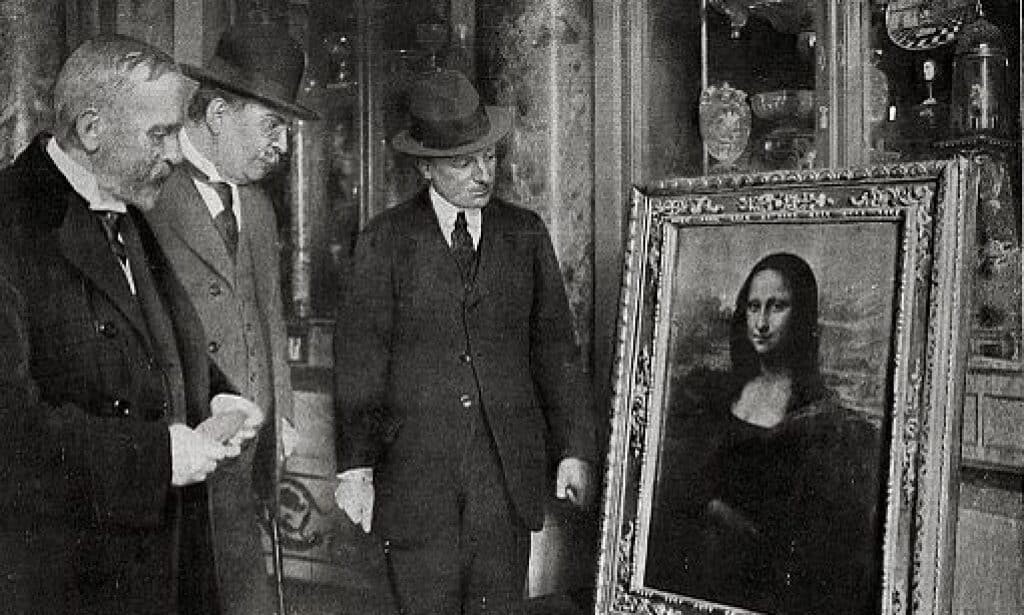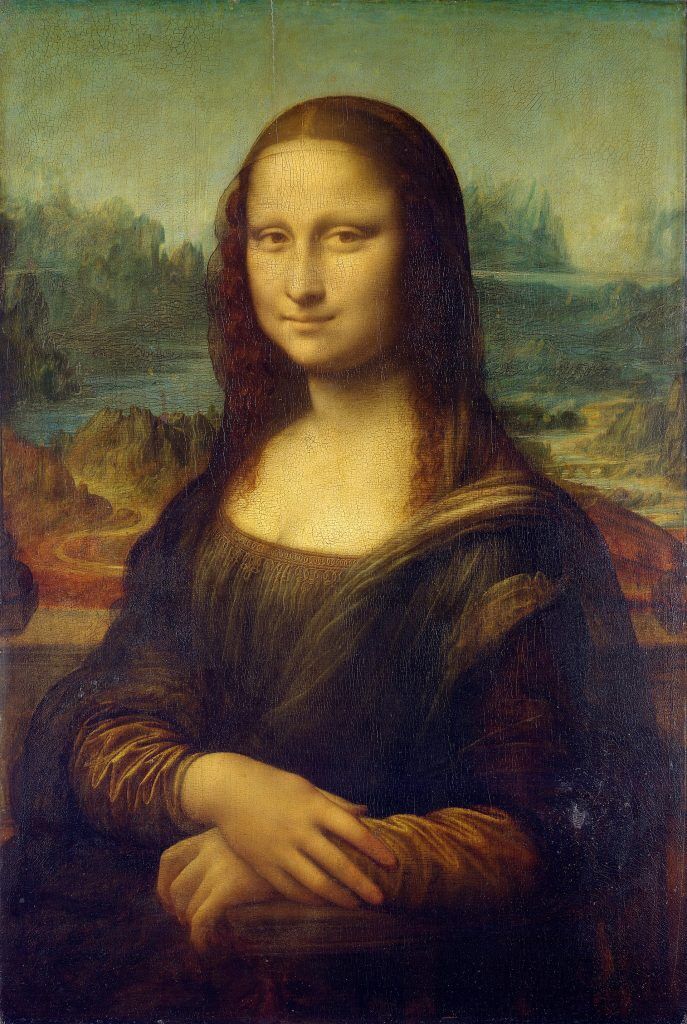On August 21, 1911, the famous Leonardo da Vinci painting the Mona Lisa was stolen from the Louvre museum in Paris by a petty thief named Vincenzo Perugia (sometimes spelled Peruggia), who had previously worked in the museum. The theft of the Mona Lisa caused a worldwide search that would be concluded more than two years later when the priceless painting was found in Perugia’s possession. The mystery is how he did it and why he committed the crime in the first place.

How Vincenzo Perugia Stole the Mona Lisa
Easy Access to the Museum
The first puzzle is how he got into the museum on that August day to gain access to the painting. Police theorized that he had hidden in the museum the night before and came out once the museum had closed for the day. But Perugia himself later stated that he gained access to the museum in a much less sinister way on the day of the actual theft. He said that he had a white smock worn by employees of the museum (possibly kept from the time he worked at the Louvre previously) and, when the crew of workers for the day entered through an employee entrance, he joined the crowd and walked into the museum without being questioned.
The Off the Wall Story
He walked around the large building, blending in with the other workers, until he went into the room where the Mona Lisa hung and waited until he was the only person there. This was before any type of modern alarm system existed, so he just took the painting off of its hangers and walked quickly to the closest stairway. He then removed the painting from its frame and, as he later claimed, walked out with the painting under his smock.

The Archives Nationales in Paris questions this, however. They point out that Perugia was too short to have hidden it under his smock while he was wearing it. They suggested instead that he took the smock off, wrapped the painting in it, and walked back out the same door that he had entered. Or was there a second person involved? Either way, the robbers successfully executed the theft of the Mona Lisa.
However, this is not the only possible discrepancy between what authorities concluded and what Perugia claimed.
Although a native of Dumenza, Italy, Perugia was living in Paris at the time of the theft of the Mona Lisa. Unsure of what to do with the painting, he stashed it in an old trunk in his apartment and tried to figure out what to do next.
Two years passed.
Return of the Mona Lisa
Perugia was restless to get the painting out of his possession. So he traveled back to his home country and stopped in Florence. There he contacted the owner of a nearby art gallery, Alfredo Geri. Perugia would later claim that he solely wanted to return the painting to its rightful country of origin. He also said that his purpose in taking the artwork was entirely patriotic.
Geri was suspicious of Perugia’s painting. So he had another owner of a gallery take a look, and that man discovered that Perugia did, in fact, have the original da Vinci painting. The two men persuaded Perugia to leave the painting in their custody. The nervous Perugia was only too happy to oblige. The two men quickly contacted the police, and they arrested Perugia.

Was it For Money or Fame?
Art professor Noah Charney states that Perugia mistakenly thought he would be thought of as a hero by the Italian people. Instead, he was imprisoned and the painting was eventually sent back to the Louvre in 1913.
Related: Madonna with Saint Giovannino: Painting with a UFO?
There is an alternate theory about why he eventually wanted to deposit the painting with gallery owner Alfredo Geri. It has nothing to do with the “home” of the painting. Despite his claim of patriotism, it was clear that he intended to sell it for an astronomical amount of money. Indeed, as early as the end of 1911, Perugia wrote to his father that he would make his fortune “in one shot.”
The authorities didn’t quite know what to do to a perpetrator of this type of crime. Theefore, after a short sentence of seven months they released him.
Perugia fought for Italy in the first World War. He eventually went back to France, married and fathered a daughter. He died on October 8, 1925, in a suburb near Paris. Because he had by then reverted to his birth name of Pietro Peruggia, few people made the connection at his passing with the infamous theft of the Mona Lisa.
The Theft of the Mona Lisa Makes Her Famous
The popularity of the painting after its return grew until it has become, arguably, the most famous piece of art in the world. This may not have happened, Charney says, if a different painting had been stolen. The image of Mona Lisa was plastered in newspapers and magazines around the world. Carney credits the world-wide attention with familiarizing the world with the image of the lady with the enigmatic smile. So, in a roundabout way, Perugia is responsible for the current astounding fame of the painting.

We may never know the true motivations for Perugia’s theft of the Mona Lisa. Perhaps he passed such information onto his progeny. There may be more than one.
Times have changed. The Mona Lisa now hangs behind bullet-proof glass. It is located in an area of the Louvre security guards monitor at all times to prevent another theft of this masterpiece that only a Renaissance genius could have painted.
Sources:
Vincenzo Peruggia, Wikipedia, pulled 7-7-16.
History Today website, pulled 7-7-16.
Mona Lisa: The theft that created a legend – CNN, pulled 7-7-16.